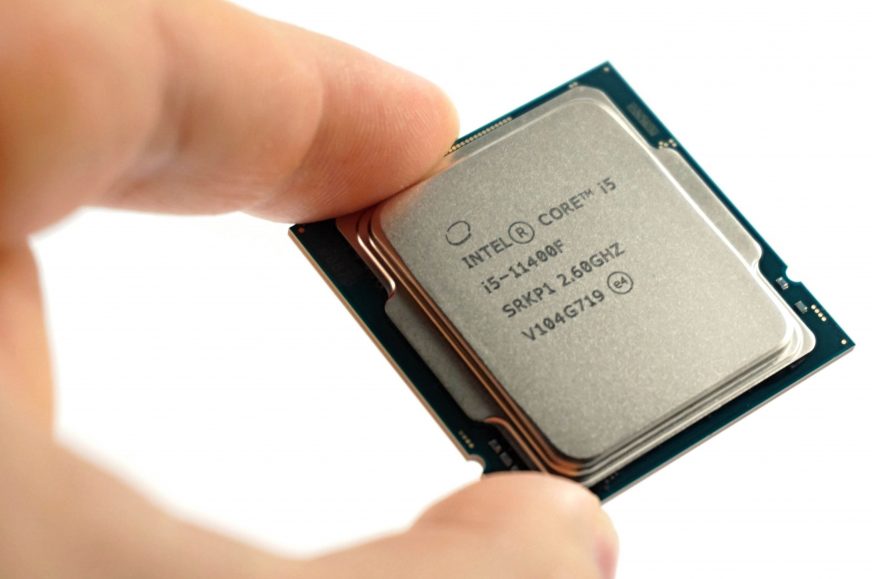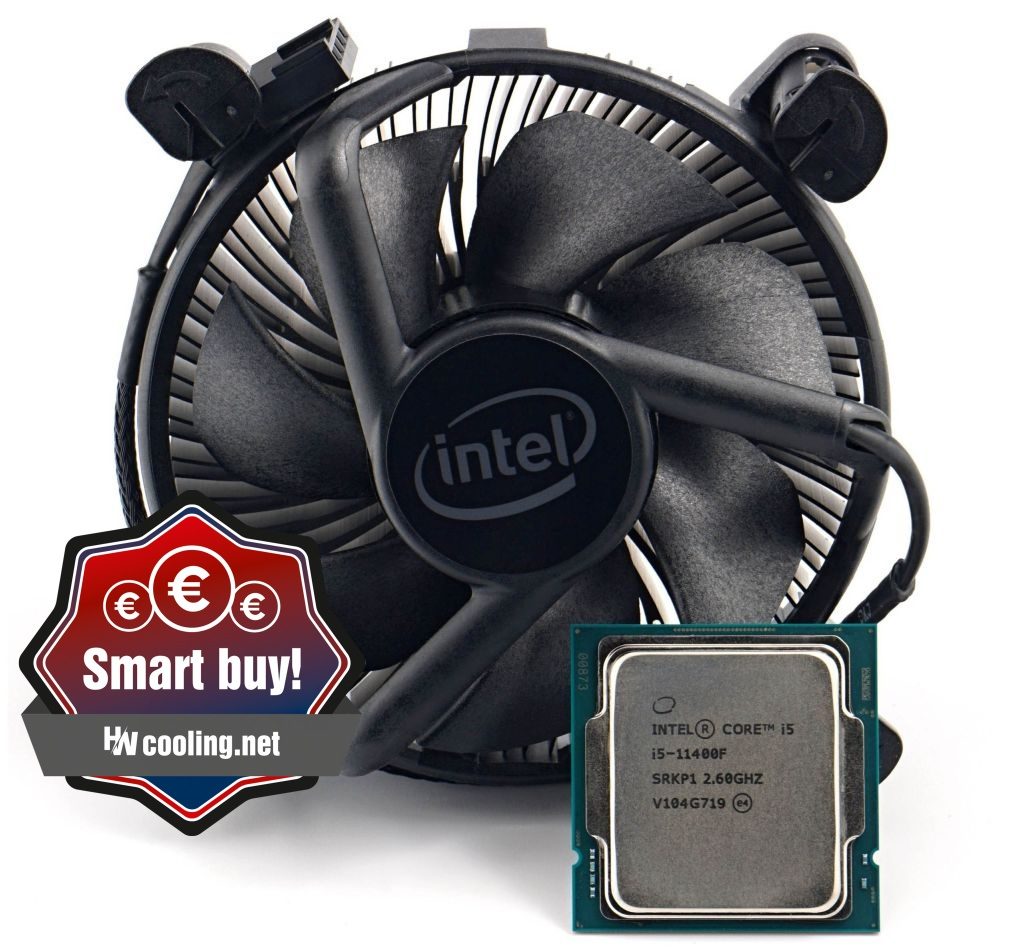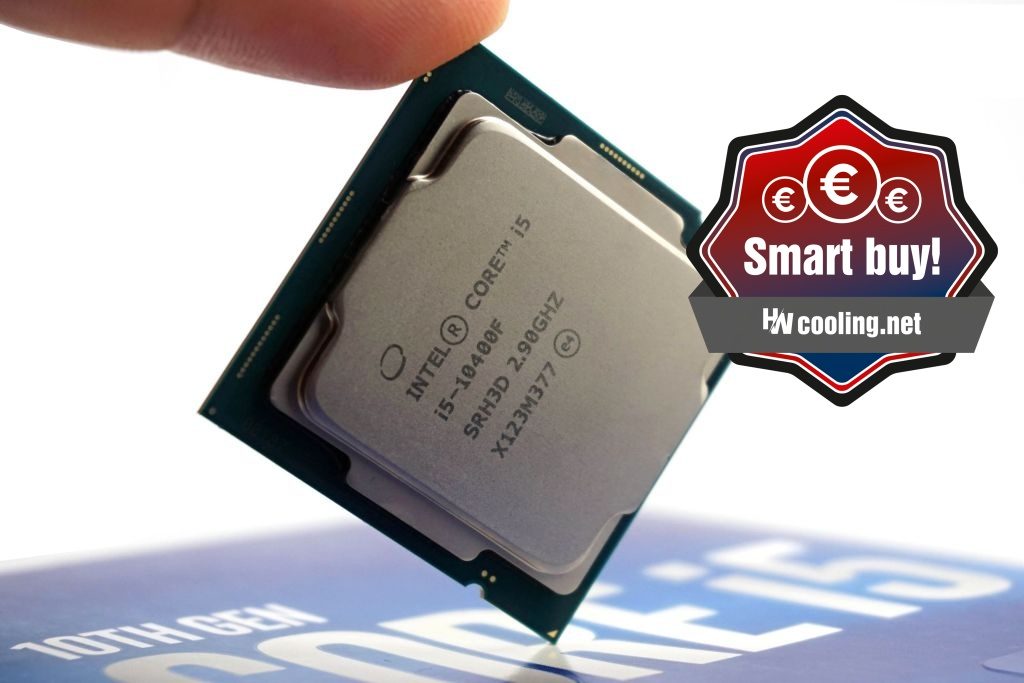Conclusion
Intel has practically no direct competition in the segment of cheaper processors. The lowest Core i5 CPUs are significantly cheaper than the Ryzen 5 5600X, which is AMD’s entry level in this class. Therefore, this brotherly duel of the new (11400F) with the older (10400F) Core i5 is more attractive than comparing the processors between the two companies. That was also a wish of one of our readers, and now it is finally coming true.
Conclusion
Core i5 processors (and these cheapest models in particular) are designed primarily for less demanding users with regular requirements. Most often it will probably be some gaming, web browsing or occasional photo editing. This needs to be considered when evaluating these processors.
The newer Ci5-11400F is naturally faster, even in the practice of light use. Results from PCMark, which are based on practical tests from real application scripts, show that Rocket Lake is 10% faster even when launching applications. Anyway, it doesn’t matter, whether a web browser or some text editor or graphics editor (PCM tests in Gimp) ready to use in 1.2 or 1.3 seconds. There is a slightly bigger difference in swiftness in the web environment, where the Ci5-10400F can be slower by up to 35–38% according to the Octane and Speedometer tests, which is mainly due to the lower single-threaded performance.
Most of these processors run and will likely run in gaming computers. The difference in game performance is in the range of none to 13 percent. The lower limit corresponds to rare cases of playing in very high resolution. For example in DOOM Eternal or Shadow of the Tomb Raider in UHD (3840 × 2560 px) resolution with the highest graphics settings you can measure the difference at a level below 0.5% even with a high performance graphics card such as the GeForce RTX 3080.
However, most owners of this processor will not be using such a high resolution, and it is more relevant to compare the game performance at lower resolutions at 1080p or 1440p. But Full HD, where the Ci5-11400F compared to Ci5-10400F is only about 9% better on average in games. The highest difference is 23% in Total War Saga: Troy. The harmony of Rocket Lake with high refresh rate monitors thus may be better, for example also in F1 2020, Borderlands 3 or in Metre Exodus. In these games, there is still a relatively large performance difference of about 10%. With higher resolutions, these differences are already shrinking and in QHD (1440p) it is only 5% on average in favor of the Ci5-11400F.
One thing is the higher performance of the Ci5-11400F (Rocket Lake) and the other its higher power draw. Its percentage increase is significantly higher than the increase in RL’s performance. The Ci5-10400F (Comet Lake) can be up to 59% more energy-efficient and thus the Rocket Lake has significantly worse value of gaming performance per watt. And not only gaming performance, but also computing. Although we probably do not have to go too deep in this class and in the evaluation it will be enough to state that the average computing performance of the Ci5-11400F in applications is higher by about 20% on average compared to the Ci5-10400F (whether in 3D rendering, video editing, graphic effects editing or photo editing), but for the price of 60–70% power consumption increase.
It may be even more in video encoding, but there we again point out that Rocket Lake uses the AVX-512 in the default settings with the x264 encoder, which do not add much performance here, but on the contrary significantly increase power consumption and it’s better to manually turn of these 512-bit AVX instructions, by adjusting parameters, etc. However, we will deal with this in even more detail in a separate article.
The significantly higher power draw is given by several factors. First, because Rocket Lake is pushing the clock rate more aggressively and has a much larger chip, which likely also is one of the weaker ones, unsuitable for Core i7 or Core i9. The older Core i5-10400F never even comes close to PL2 values (134 W) and only slightly exceeds the TDP (65 W) with the power consumption of up to 70 W. The new Rocket Lake is already reaching the 154 W limit and although the efficiency and performance per watt values are significantly worse, it is still a processor that can operate without the slightest difficulty even with cheap coolers, the temperatures are relatively low. It also comes with an improved stock cooler, which you can recognize from the Core i7 and Core i9 Comet Lake with locked multipliers. That is, the black one with a copper core. The cooler supplied with the Core i5-10400F is weaker, with a monolithic aluminum heatsink, but due to the lower power consumption of this processor, it will probably be even quieter even with variants with thermal paste under the IHS.
Choosing the “better” processor of these two is extremely difficult and depends on whether you prefer higher performance and increased power consumption (you could then be more interested in the Ci5-11400F) or, conversely, you do not mind the slightly lower performance and the highest possible efficiency (Ci5-10400F) is important to you. In addition, Comet Lake is currently a bit cheaper. But this may change later, or the current price difference of around € 20 may be reduced, and in some markets the price difference between these processors may already be smaller now. The recommended price is the same in both cases. After a long evaluation, we decided to give both the Core i5-11400F and Core i5-10400F our editorial award “Smart buy!”. Rocket Lake has excellent performance in relation to price, and even if we take into account current market prices, Comet Lake usually does not lag far behind it and, moreover, it is always significantly more energy-efficient.
| Intel Core i5-11400F |
| + Amazing single-threaded performance |
| + High single core boost clock of 4.4 GHz |
| + Higher IPC compared to the Core i5-10400F |
| + 6 cores and 12 threads at a lower price level |
| + Higher gaming and application performance compared to the Core i5-10400F |
| + Excellent price/performance ratio |
| + Attractive processor to which AMD has no competition |
| + AVX-512 instruction set support |
| - Weaker efficiency or lower performance per watt |
| - No integrated GPU |
| - Obsolete 14 nm manufacturing process |
| Retail price: EUR 175 |
| Intel Core i5-10400F |
| + Decent single-threaded performance |
| + 6 cores and 12 threads at a lower price level |
| + Always nicely low power draw |
| + Great efficiency, or high performance per watt |
| + Extremely low idle power draw (8 W) |
| + Low temperature |
| + Excellent price/performance ratio |
| + Attractive processor to which AMD has no competition |
| - Usually a weaker price/performance ratio than the Ci5-11400F |
| - No PCI Express 4.0 support |
| - No integrated GPU |
| - Obsolete 14 nm manufacturing process |
| Retail price: EUR 156 |
We’ve got the games for our tests from Jama levova
Special thanks to Blackmagic Design (for a licence to DaVinci Resolve Studio), Topaz Labs (for licences to apps DeNoise AI, Gigapixel AI and Sharpen AI) and Zoner (for a licence to Photo Studio X)
- Contents
- Intel Core i5 Rocket and Comet Lake in detail
- Methodology: performance tests
- Methodology: how we measure power draw
- Methodology: temperature and clock speed tests
- Test setup
- 3DMark
- Assassin’s Creed: Valhalla
- Borderlands 3
- Counter-Strike: GO
- Cyberpunk 2077
- DOOM Eternal
- F1 2020
- Metro Exodus
- Microsoft Flight Simulator
- Shadow of the Tomb Raider
- Total War Saga: Troy
- Overall gaming performance
- Gaming performance per euro
- PCMark and Geekbench
- Web performance
- 3D rendering: Cinebench, Blender, ...
- Video 1/2: Adobe Premiere Pro
- Video 2/2: DaVinci Resolve Studio
- Graphic effects: Adobe After Effects
- Video encoding
- Audio encoding
- Broadcasting (OBS and Xsplit)
- Photos 1/2: Adobe Photoshop and Lightroom
- Photos 2/2: Affinity Photo, Topaz Labs AI apps, ZPS X, ...
- (De)compression
- (De)cryption
- Numerical computing
- Simulations
- Memory and cache tests
- Processor power draw trend
- Average processor power draw
- Performance per watt
- Achieved CPU clock speed
- CPU temperature
- Conclusion











